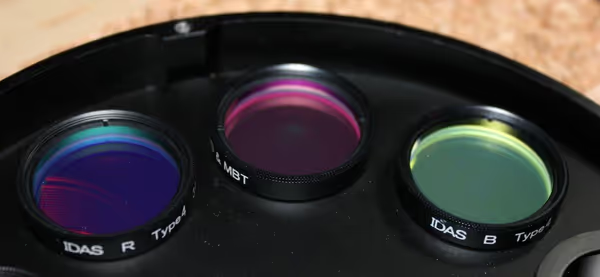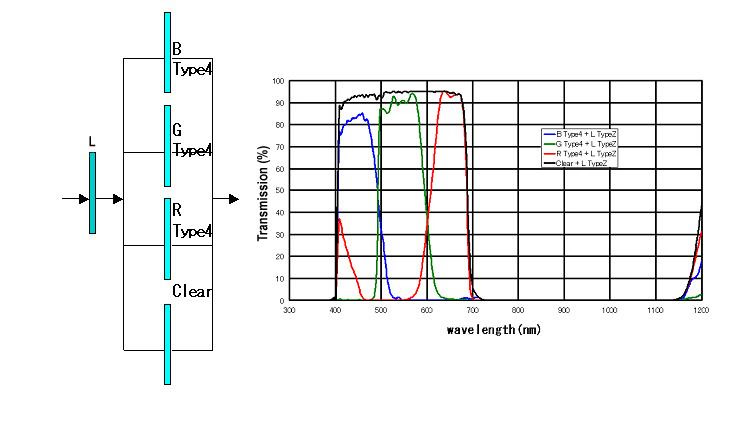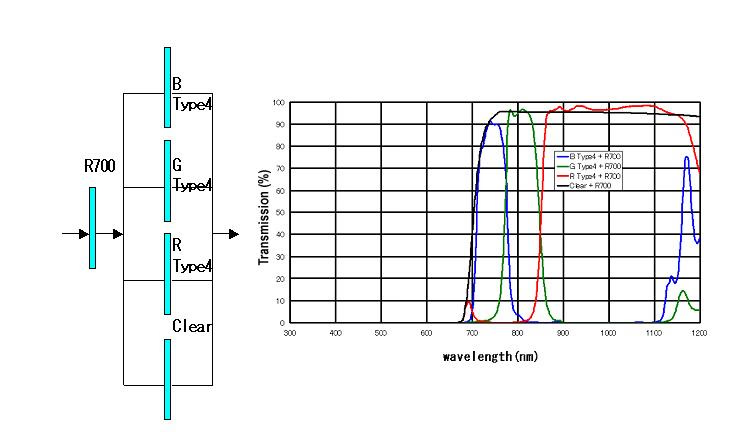IDAS Type 4 filters for visual and infrared color imaging
Quite recently I got IDAS Type 4 BGR filters. Those filters aren't just plain RGB filters. Aside of imaging in visual light to get RGB images those filters also allow false color imaging in infrared. Each filters passes a band in visible and infrared light. Depending if they are stacked with IR blocking or passing filter they work in one of those two modes. Infrared false color imaging opens new possibilities for interesting imaging of deep space objects as well as planets like Jupiter.
Let me introduce those IDAS Type 4 filters and describe how they work.

BGR IDAS Type 4 filter set
Hutech sells IDAS Type 4 filters for around $295. My set was sent by mail and after paying import duties filters arrived from Japan under two weeks. The set consist of three filters. There is no RG700 or IR/UV cut showcased on the vendor website. You have to get them on your own.
As the filters must be stacked with IR blocking/passing filter you need a filter wheel and a filter drawer or two filter wheels to make it easy to change (or put that extra filter on the camera nosepiece).
The filter cells are quite low profile. Maybe not as short as Astronomik but close, so they will fit even in slim filter wheels. The build quality at this point looks good. I didn't tested them in the field yet.
Filters configurations
For visual RGB imaging we have to stack Hutech filters with IR/UV cut filter. Even in visual mode those filters aren't just normal
. Red filter passes also a bit of blue wavelengths so that violet color can be achieved on photos. Quite likely young and very bright in UV starts will tend to get purple with those filters (to be checked). On the other hand both bands won't focus in the same point unless the object will be high on the sky (like 60-70 degrees or more). Atmospheric dispersion will defocus short and long wavelengths on lower altitudes. If you have a dispersion corrector then it should focus nicely - if the scope has no chromatic aberration.

For infrared imaging we have to stack those filters with a 705-710 nm longpass filter that cuts all visible light but doesn't cut infrared band of the blue filter. Astronomik ProPlanet 742 will cut it a bit so 720 nm cut-on wavelength seems to be longest optimal you could use. Baader IR-Pass is to wide and red filter will be polluted with visible red light.

For optimal performance we will need a highly IR-sensitive mono camera. As resolving power decreases with longer wavelengths it will be also important not to use given telescope high resolutions that work in visible light (faster f/ratio preferred).
In case of DS imaging there are also NIR tricolor Astrodon filters that pass only infrared bands. There is few pictures on the web taken with those filters, so you may get some examples how IR false color images would look like. In short IR imaging should allow penetrating dusty regions or those hidden under nebulae emissions. Also star colors will be different as well the sky background should be cleaner (lesser skyglow effect from Moon or artificial lights) - just like H-alpha and S II may differ from O III.
In the case of planetary imaging I can't tell what exactly will come out but depending how filters IR bands map infrared methane and ammonia absorption bands in gas planets we can get good color differentiation of various cloud features of Jupiter (depending on their composition). Saturn cloud bands may get more contrast and methane absorption will dominate. It will work if the planet will be bright enough in those bands to allow efficient imaging at high resolutions. I don't have good absorption graphs for Mars so I can't tell what result it would give in IR.
Upcoming weeks must provide some clear nights so that I could test those IDAS Type 4 filters on Jupiter as well as on some deep space objects.
Comment article